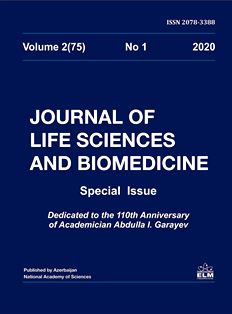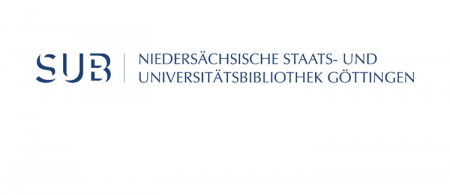
Anti-apoptotic activity of serotonergic system towards neonicotinoid actara
Research article: Anti-apoptotic activity of serotonergic system towards neonicotinoid actara
Authors: T.N.Allahverdiyeva1, A.V.Aminov2, A.A.Mekhtiev2
1Azerbaijan State Agrarian University, Ministry of Agriculture of the Republic of Azerbaijan,
Ganja, Azerbaijan
2Academician A. Garayev Institute of Physiology, Azerbaijan National Academy of Sciences,
Baku, Azerbaijan
Abstract: The role of serotonergic system in the phenomenon of preconditioning and protection of fish tissues from impact of neonicotinoid insecticide actara has been studied. Sub-lethal concentration of insecticide actara was calculated for the specimens of sazan (Cyprinus carpio Linne) with the application of the Finney met-hod. The resistance to the lethal concentrations (400 mg/L, 5 days) of insecticide actara in the fish was created using the preconditioning procedure (100 mg/L, 1 day). The level of serotonin-modulating anticon-solidation protein (SMAP; Mekhtiev, 2000), being in linear relationship with serotonin, was measured in the fish brain and liver using the indirect solid-phase ELISA-test. The effects of i.m. administration of SMAP on survival of sazan specimens under impact of the lethal concentrations of insecticide were studied. Using the technique by Asakawa and Matsushita (1980), lipid peroxidation levels were determined based on the levels of malone dialdehyde and hydroperoxides in the brain, liver and gills of the sazan specimens subjected to the impact of sub-lethal concentrations of insecticide and i.m. administered with SMAP. Sub-lethal concentration of insecticide actara for sazan specimens was equal to 360 mg/L. It was shown that artificial upregulation of serotonergic system as a result of pre-conditioning towards insecticide actara or i.m. administration of SMAP to the sazan specimens, subjected later to the impact of lethal concentrations of insecticide actara, promotes their survival and normalization of lipid peroxidation in their tissues. The conclusion concerning anti-apoptotic activity of SMAP towards the impact of the lethal concentrations of neonicotinoid insecticide actara in the sazan specimens has been made.
Keywords: Neonicotinoid insecticide actara, sazan specimens, pre-conditioning phenomenon, serotonin-modulating anticonsolidation protein (SMAP), lipids peroxidation
References
Allahverdieva T.N., Mekhtiev Kh.Sh., Gaysina A.A., Mehtiev A.A. (2019) Serotonin-modulated anticonsolidation protein contributes to the survival of animals of various species when exposed to bacterial and chemical toxins. Journal of Evolution. Biochemistry and Physiology, 55(1): 23-27.
Bakhshalieva R.R., Mekhtiev A.A., Kasimov R.Yu. (2010) Participation of serotonin-modulated anti-consolidation protein in mediating the impact of adverse factors on the sex level in the tissues of sturgeon juveniles. Journal of Evolution. Biochemistry and Physiology, 46(5): 370-374.
Ismailova U.S., Mehtiev A.A. (2018) Study of reparative mechanisms in the retina and hypothalamus that ensure the restoration of rhodopsin in conditions of retinal dystrophy in rabbits. Bulletin of Ophthalmology, 134(5): 39-46.
Mekhtiev A.A. (2000) Detection in the brain of rats of a protein with anti-consolidation properties. Bulletin of the experiment. biol. med., 129(8):147-150.
Mekhtiev A.A., Movsum-zade S.K. (2008) Anti-mutagenic activity of the serotonergic system and underlying mechanisms in juvenile sturgeon (Acipenser gueldenstaedti persicus) and goldfish (Carassius auratus). Journal of evolution. Biochemistry and Physiology, 44(5): 476-481.
Mehtiev A.A., Palatnikov G.M., Movsum-zade S.K., Kasimov R.Yu. (2010) An increase in the level of mutations in the tissues of bull-calves and juvenile sturgeons under conditions of blockade of serotonin-modulated anticonsolidation protein by antibodies. Journal of Evolution. Biochemistry and Physi-ology, 46(5): 375-379.
Smirnov V.M., Sveshnikov D.S., Tsirkin V.N. (2015) Serotonergic nerves. Moscow: Medical Information Agency, 376 p.
Asakawa T., Matsushita S. (1980) Coloring con-dition of TBA test for detecting lipid hydroperox-ides. Lipids, 15(3):137-140.
Garduño J., Galindo-Charles L., Jiménez-Rod-ríguez J et al. (2012) Presynaptic α4β2 nicotinic acetylcholine receptors increase glutamate re-lease and serotonin neuron excitability in the dor-sal raphe nucleus. J. Neuroscience, 32(43): 15148-15157
Li S., Hafeez A., Noorulla F., Geng X., Shao G., Ren Ch., Lu G., Zhao H., Ding Y., Ji X. (2017) Preconditioning in neuroprotection: From hypoxia to ischemia. Prog. Neurobiol., 157(1): 79–91.
Maslov L.N., Lishmanov Yu.B., Kolar F. et al. (2012) Hypoxic preconditioning – a phenome-non increasing the tolerance of cardiomyocytes to hypoxia / reoxygenation. Neuroscience and Be-havioral Physiology, 42(4): 380–391.
Nurullayeva A.N., Aminov A.V., Shamilov E.N., Abdullayev A.S., Palatnikov G.M., Mekhtiev A.A. (2017) Preventive application of serotonin-modulating anticonsolidation protein (smap) from radiation damage. "Радіоекологія-2017". Науко-во-практичної конференції із міжнародною участю. Збірник статей. Київ, к. 21-23.
Nylandsted J., Rohde M., Brand K., Bastholm L., Elling F., Jaattela M. (2000) Selective de-pletion of heat shock protein 70 (Hsp70) activates a tumor‑specific death program that is independ-ent of caspases and bypasses Bcl‑2. Proc Natl. Acad. Sci. USA, 97:7871‑9876.
Schmitt E., Parcellier A., Gurbuxani S. et al. (2003) Chemosensitization by a non-apoptogenic heat shock protein 70‑binding apoptosis‑induc-ing factor mutant. Cancer Res., 63: 8233‑8240.























